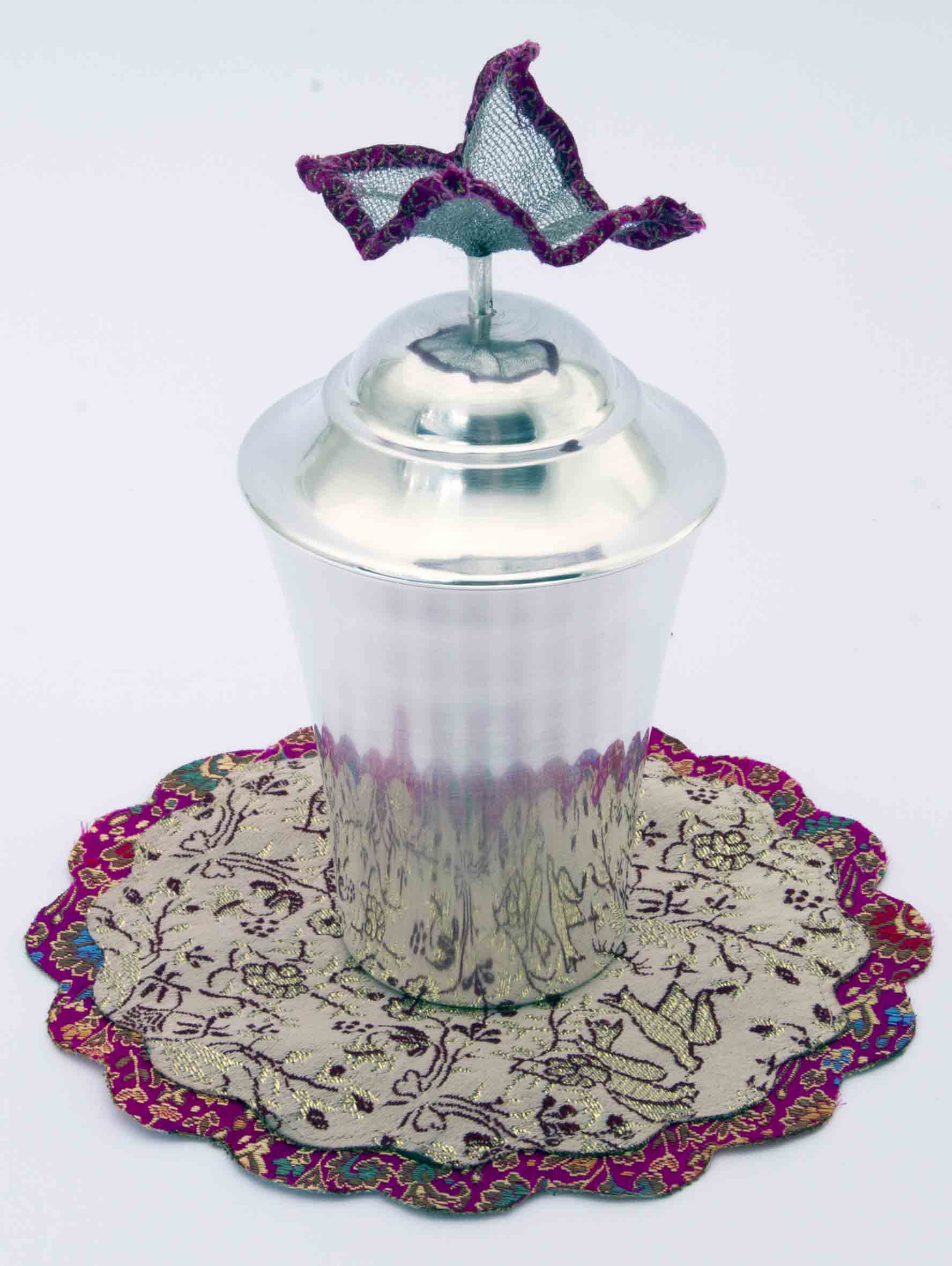Aarale Ben-Arie : là où l’Est rencontre l’Ouest (deuxième partie)
(un article ARTISTS PLANET paru dans le magazine METEOR)
Traditionnellement, les matériaux utilisés dans la fabrication des sculptures
sont le bois, le métal, l’or, la peinture, etc.
Au cours de ses expérimentations conceptuelles, Aarale a longtemps entretenu une relation particulière ave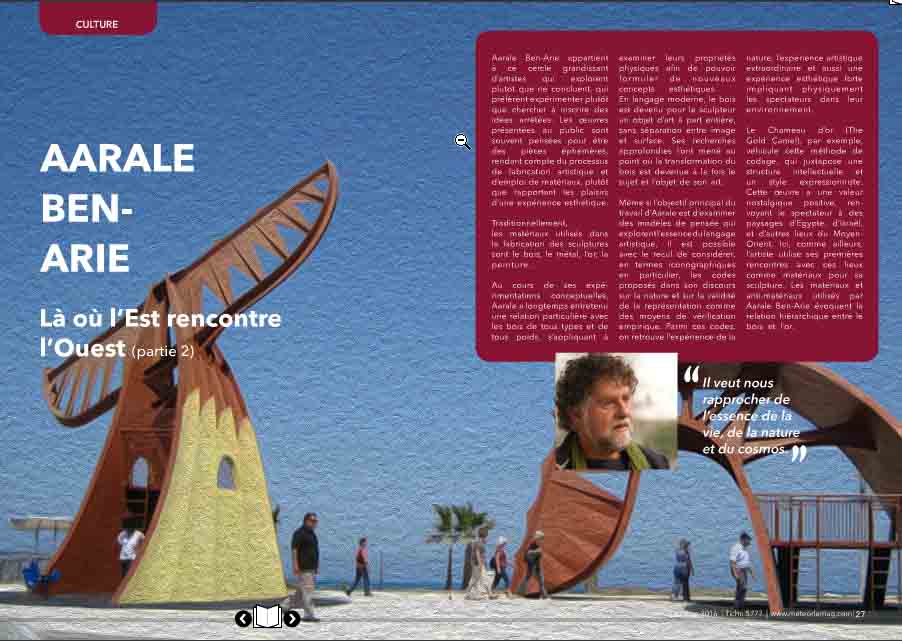 c les bois de tous types et de tous poids, s’appliquant à examiner leurs propriétés physiques afin de pouvoir formuler de nouveaux concepts esthétiques. En langage moderne, le bois est devenu pour le sculpteur un objet d’art à part entière, sans séparation entre image et surface. Ses recherches approfondies l’ont mené au point où la transformation du bois est devenue à la fois le sujet et l’objet de son art.
c les bois de tous types et de tous poids, s’appliquant à examiner leurs propriétés physiques afin de pouvoir formuler de nouveaux concepts esthétiques. En langage moderne, le bois est devenu pour le sculpteur un objet d’art à part entière, sans séparation entre image et surface. Ses recherches approfondies l’ont mené au point où la transformation du bois est devenue à la fois le sujet et l’objet de son art.
Même si l’objectif principal du travail d’Aarale est d’examiner des modèles de pensée qui explorent l’essence du langage artistique, il est possible avec l e recul de considérer, en termes iconographiques en particulier, les codes proposés dans son discours sur la nature et sur la validité de la représentation comme des moyens de vérification empirique. Parmi ces codes, on retrouve l’expérience de la nature, l’expérience artistique extraordinaire et une expérience esthétique forte impliquant physiquement les spectateurs dans leur environnement.
Le Chameau d’or (The Gold Camel), par exemple, véhicule cette méthode de codage, qui juxtapose une structure intellectuelle et un style expressionniste. Cette œuvre a un
e valeur nostalgique positive, renvoyant le spectateur à des paysages d’Egypte, d’Israël, et d’autres lieux du Moyen-Orient. Ici, comme ailleurs, l’artiste utilise ses premières rencontres avec ces lieux comme matériaux pour sa sculpture.
Les matériaux et anti-matériaux utilisés par Aarale Ben-Arie évoquent la relation hiérarchique entre le bois et l’or. La brillance de l’or lui confère un statut supérieur qui contraste avec le côté terne du bois, matériau de statut inférieur. C’est une vision autoritaire, forte, une source d’unicité et d’union entre l’individuel et le collectif. Le Chameau d’or symbolise ainsi les voyages d’Aarale entre l’espace et le temps tandis que les topographies se transforment en hiérarchies entre conquis et conquérants, exploités et exploitants. De la même façon, ses œuvres font référence aux conquêtes coloniales d’Europe et du Moyen-Orient, à l’impérialisme et aux frontières définies de manière artifi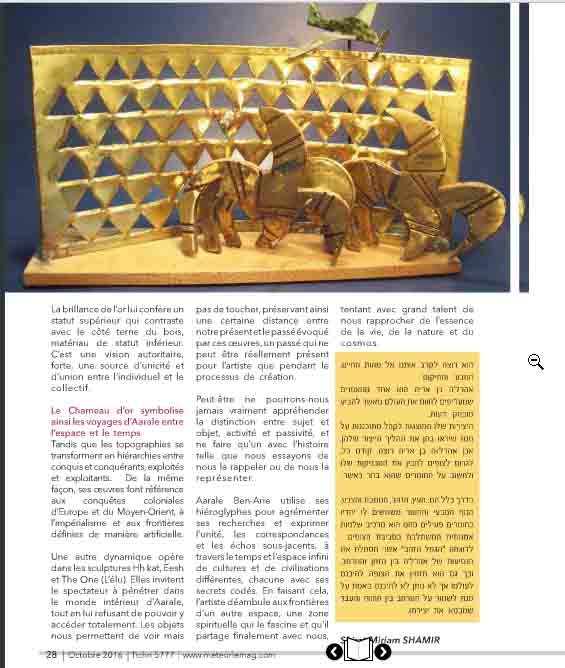 cielle.
cielle.
Une autre dynamique opère dans les sculptures Hh kat, Eesh et The One (L’élu). Elles invitent le spectateur à pénétrer dans le monde intérieur d’Aarale, tout en lui refusant de pouvoir y accéder totalement. Les objets nous permettent de voir mais pas de toucher, préservant ainsi une certaine distance entre notre présent et le passé évoqué par ces œuvres, un passé qui ne peut être réellement présent pour l’artiste que pendant le processus de création.
Peut-être ne pourrons-nous jamais vraiment appréhender la distinction entre sujet et objet, activité et passivité, et ne faire qu’un avec l’histoire t
elle que nous essayons de nous la rappeler ou de nous la représenter. Aarale Ben-Arie utilise ses hiéroglyphes pour agrémenter ses recherches et exprimer l’unité, les correspondances et les échos sous-jacents, à travers le temps et l’espace infinis de cultures et de civilisations différentes, chacune avec ses secrets codés. En faisant cela, l’artiste déambule aux frontières d’un autre espace, une zone spirituelle qui le fascine et qu’il partage finalement avec nous, tentant avec grand talent de nous rapprocher de l’essence de la vie, de la nature et du cosmos.
Dr Shirat-Miriam SHAMIR (Docteur en Arts et commissaire d’exposition), paru dans le magazine METEOR
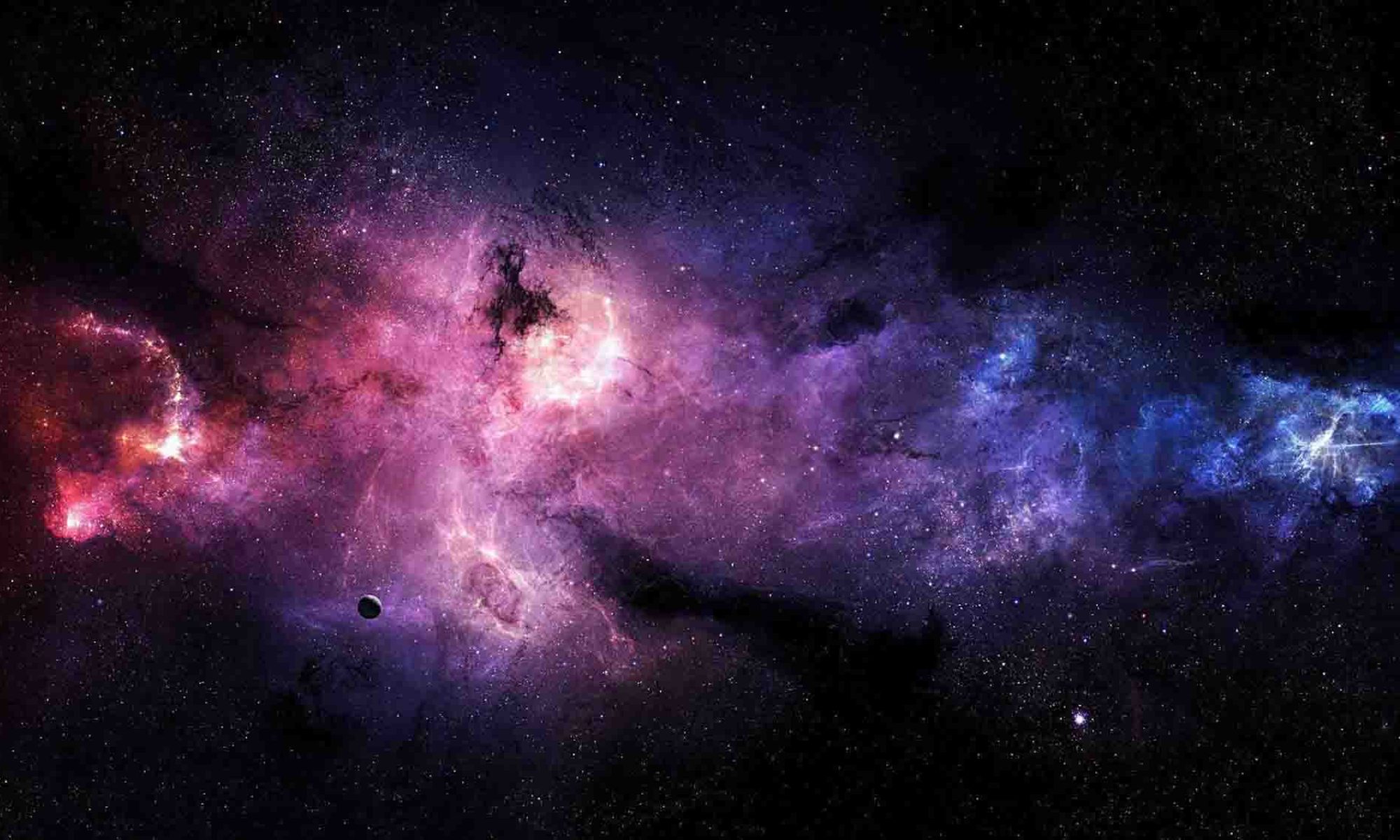

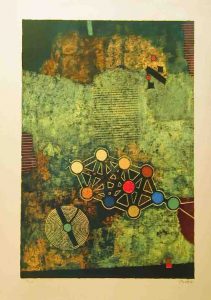
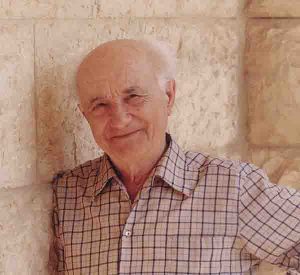
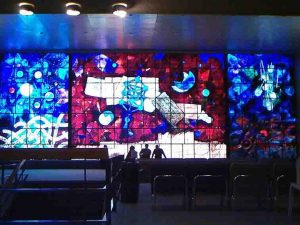 che, se décline toujours en une vaste gamme de couleurs lumineuses, pures.
che, se décline toujours en une vaste gamme de couleurs lumineuses, pures.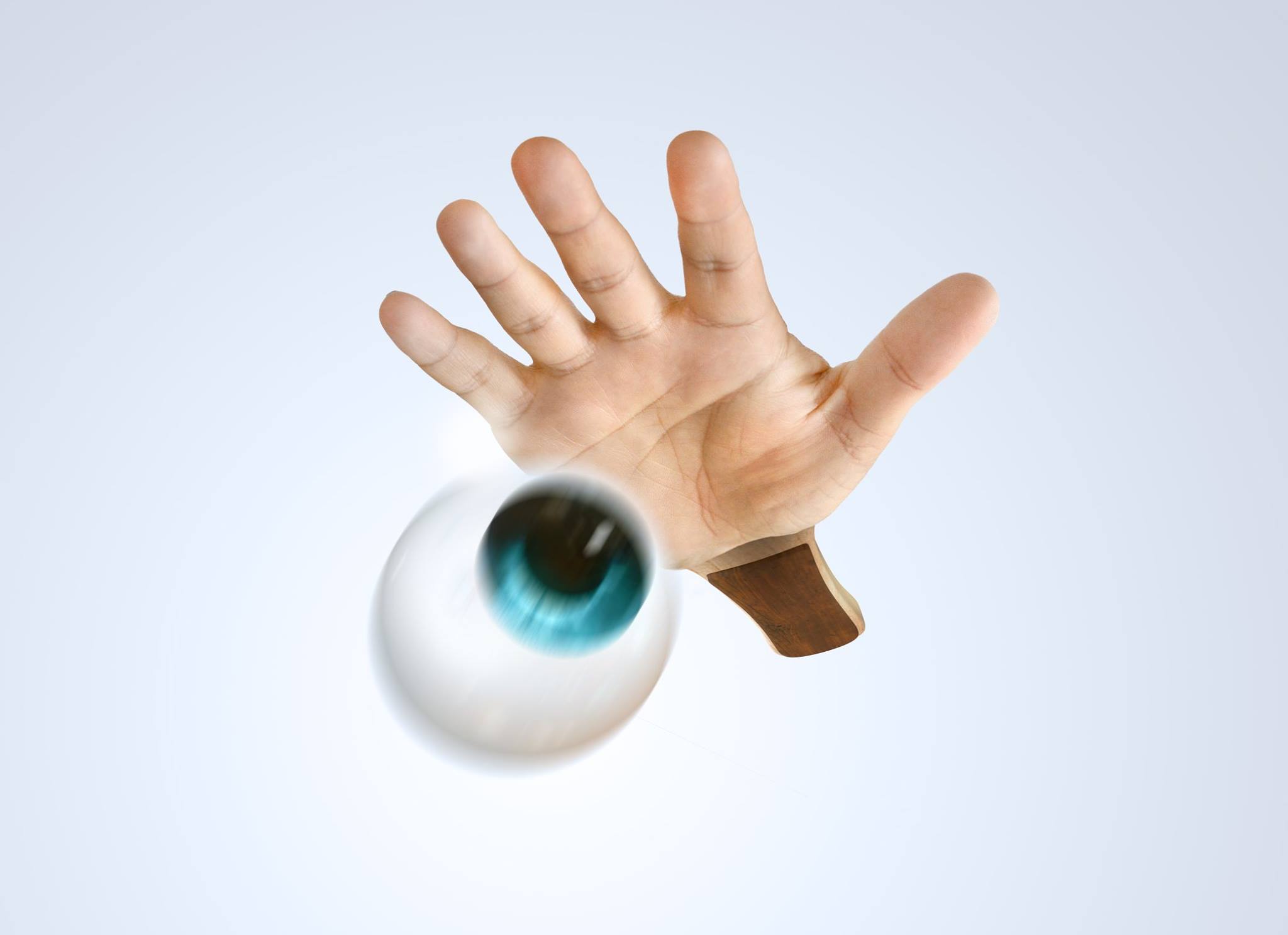

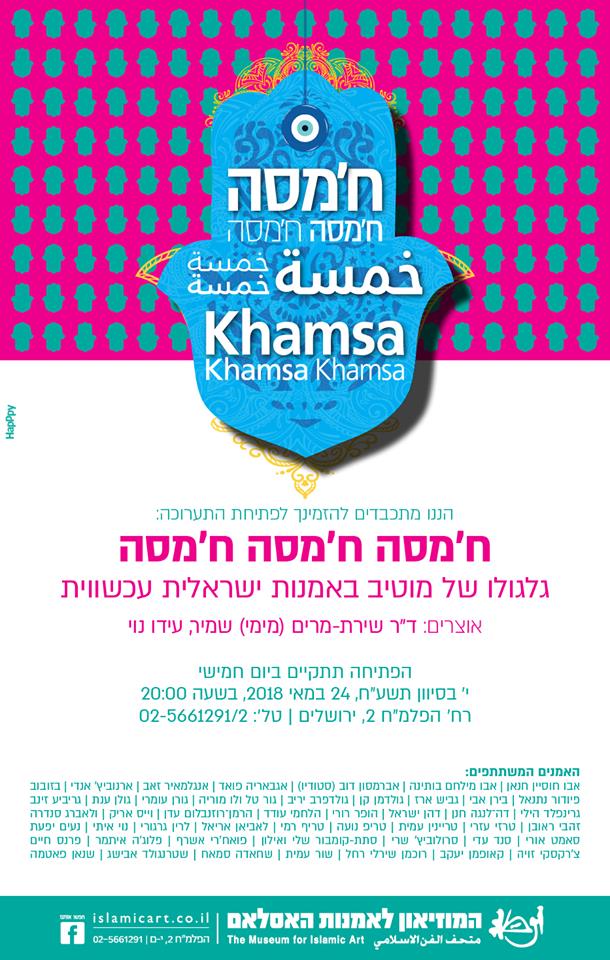
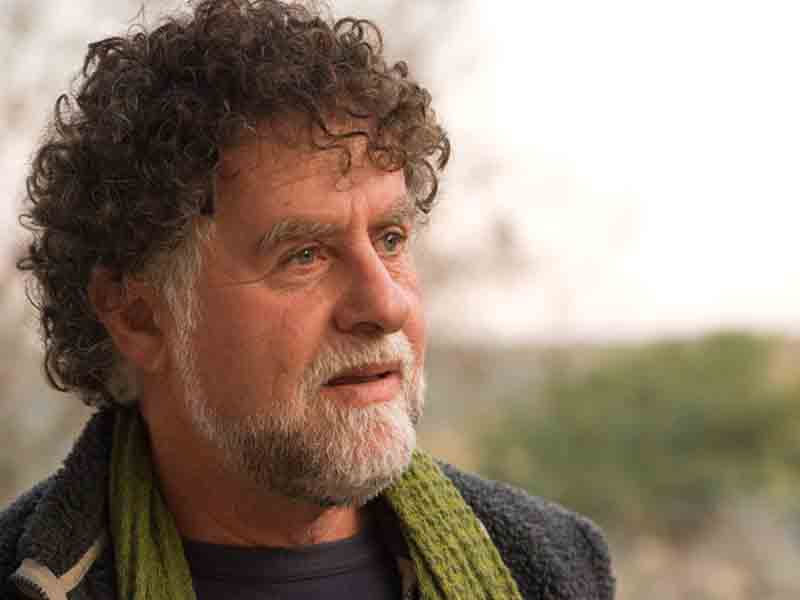
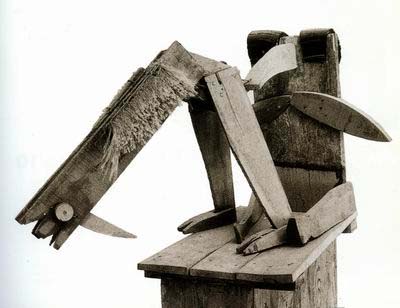

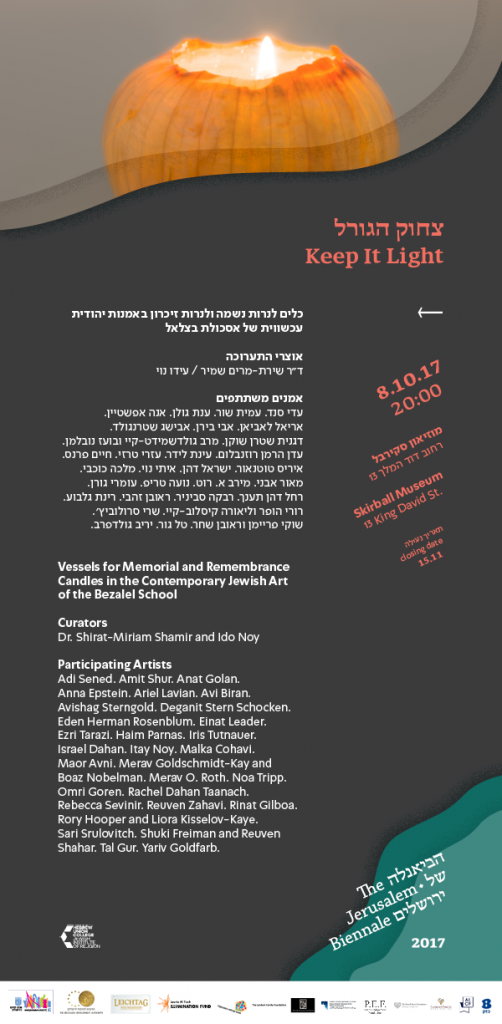
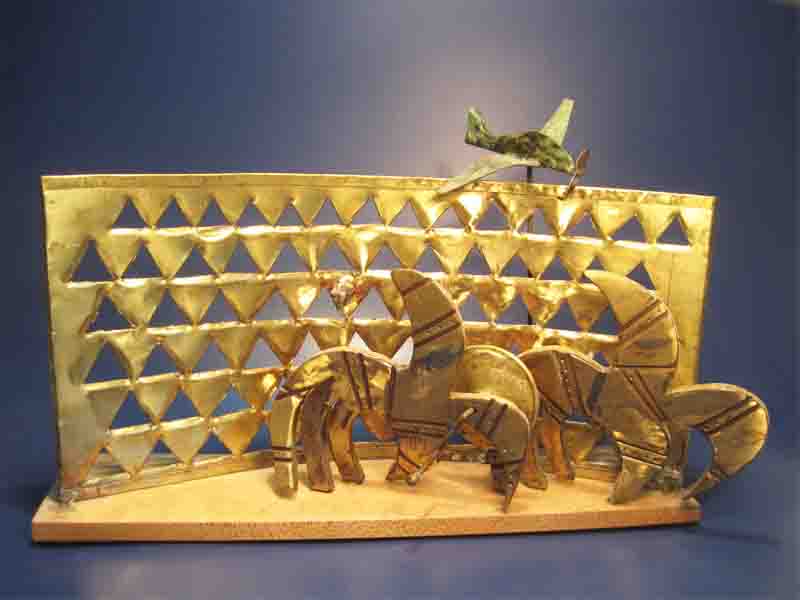 Shaped by a blend of passion and logic, this group of wood and metal works is a change of direction for Aarele Ben-Arie. Although his quest for spir
Shaped by a blend of passion and logic, this group of wood and metal works is a change of direction for Aarele Ben-Arie. Although his quest for spir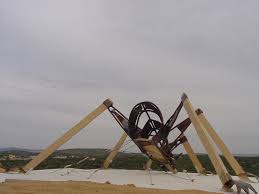 Aarele’s materials and anti-materials hint at the hierarchical relationship between wood and gold. In contrast to the wood’s low luster and consequently low status, the brilliance of the gold represents a higher level. It is authoritative, empowered, a source of uniqueness as well as union between the individual and the collective. Hence the golden camel symbolizes Aarale’s journeys from space to time as topographies are transformed into hierarchies of conquered and conquerors, exploited and exploiters. Similarly, Aarale’s works references European and Middle Eastern colonial conquests, imperialism and artificially defined borders.
Aarele’s materials and anti-materials hint at the hierarchical relationship between wood and gold. In contrast to the wood’s low luster and consequently low status, the brilliance of the gold represents a higher level. It is authoritative, empowered, a source of uniqueness as well as union between the individual and the collective. Hence the golden camel symbolizes Aarale’s journeys from space to time as topographies are transformed into hierarchies of conquered and conquerors, exploited and exploiters. Similarly, Aarale’s works references European and Middle Eastern colonial conquests, imperialism and artificially defined borders.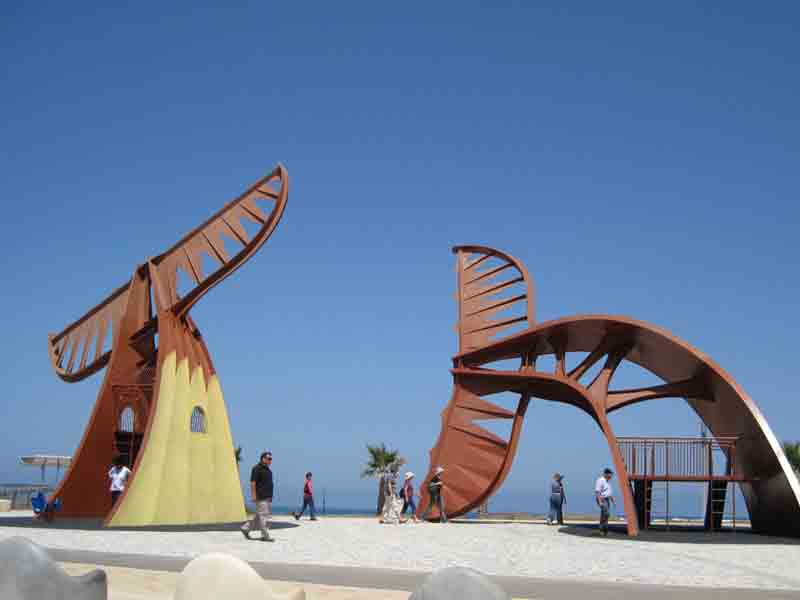
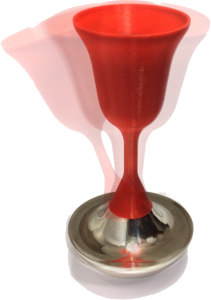
 A l’exposition « Judaïca contemporain, coupes et verres de Kiddouch de l’école des beaux-arts de Jérusalem », qui vient d’ouvrir ses portes au musée de Rishon LeZion (2, rue Ahad Haam), l’étoile du design Iris TUTNAUER est l’une des plus brillantes.
A l’exposition « Judaïca contemporain, coupes et verres de Kiddouch de l’école des beaux-arts de Jérusalem », qui vient d’ouvrir ses portes au musée de Rishon LeZion (2, rue Ahad Haam), l’étoile du design Iris TUTNAUER est l’une des plus brillantes.